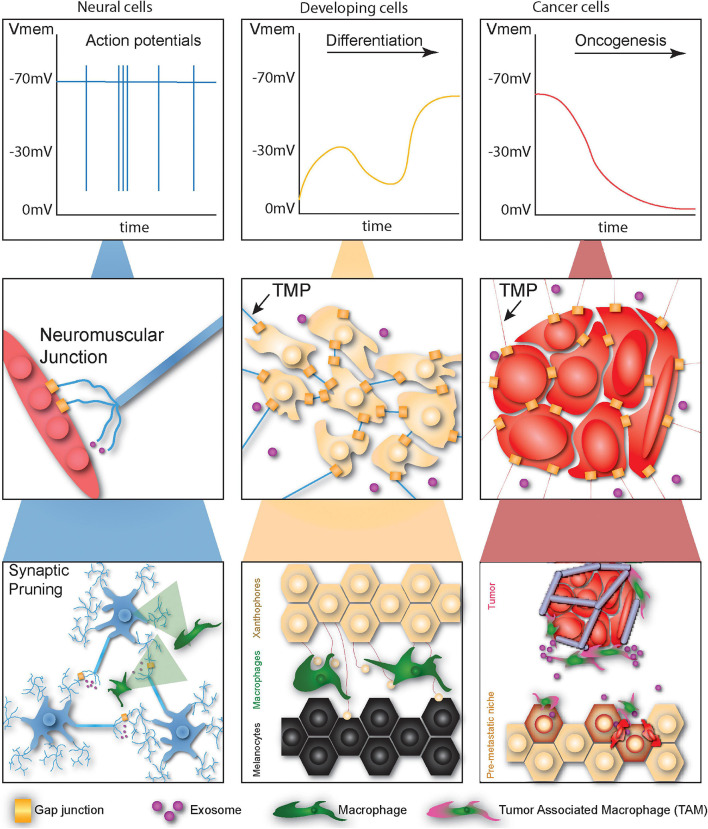FIGURE 1.
Cells undergoing developmental or tumorigenic programs employ primitive non-neural communication methods for signaling at different scales. At the physiological scale neural cells signal via fast high-magnitude changes in membrane potential. Developing cells communicate via membrane potential fluctuations, though these changes are far slower and lower in magnitude. Cancer cells tend to depolarize over time, facilitating oncogenesis. At the local scale, neurons communicate directly with myocytes via gap junctions or translate bioelectric signals into chemical signals via vesicular release. Normal and cancerous non-neural cells likewise communicate at long distances via thin membrane protrusions (TMPs), gap junctions, and exosomes. At long-distance neurons form networks capable of complex computation regulated by the pruning activity of macrophages. Macrophages also establish networks of signaling projections between different types of skin cells during development and facilitate priming of the metastatic niche during cancer metastasis.

